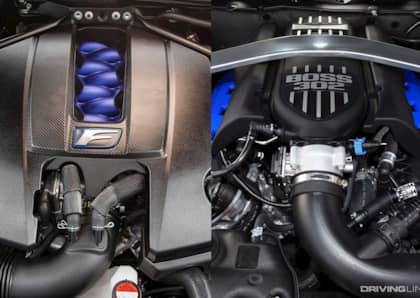The 5 Best Japanese V8 Engines Of All-Time
Japan came late to the V8 game in North America, but when eight-cylinder engines did begin to arrive from across the Pacific they had a significant impact on the automotive industry as a whole. Using advanced designs and forward-thinking build and assembly techniques, V8 engines from Toyota and Nissan first helped introduce the Lexus and Infiniti luxury brands before making in-roads in the pickup and SUV segments.
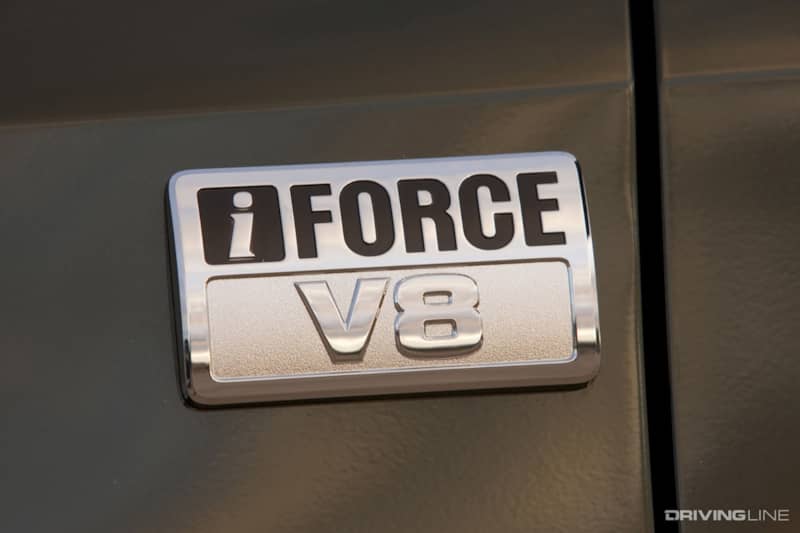
Which of these upstart eight-cylinder mills were the most impressive? Here are our picks for the 5 best Japanese V8 engines of all time.
Toyota 1UZ-FE
When Toyota decided to enter the luxury market with its Lexus brand at the end of the 1980s, it knew that to be taken seriously it had to out-perform the German and American status quo in as many arenas as possible. Two of the biggest targets were overall build quality and drivetrain reliability, with the latter requiring the design of the brand's first dual overhead camshaft V8 engine, the 1UZ-FE.
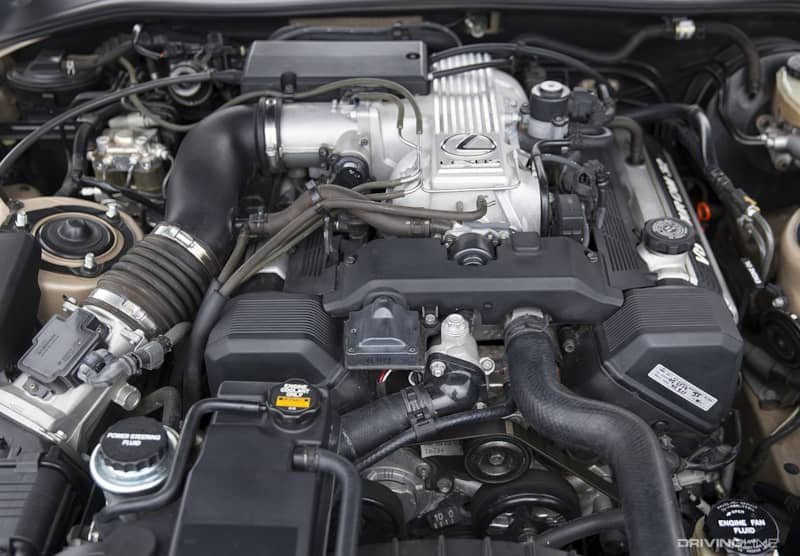
Americans first encountered this motor under the hood of the 1989 Lexus LS 400, where it produced 250 hp and 260 lb-ft of torque from its 4.0L of displacement. Much was made of the motor's smooth character, which Lexus flaunted in television spots showing a pyramid of crystal champagne glasses balanced on the hood of the LS 400 as it ran at full throttle at 145-mph on a dynometer.
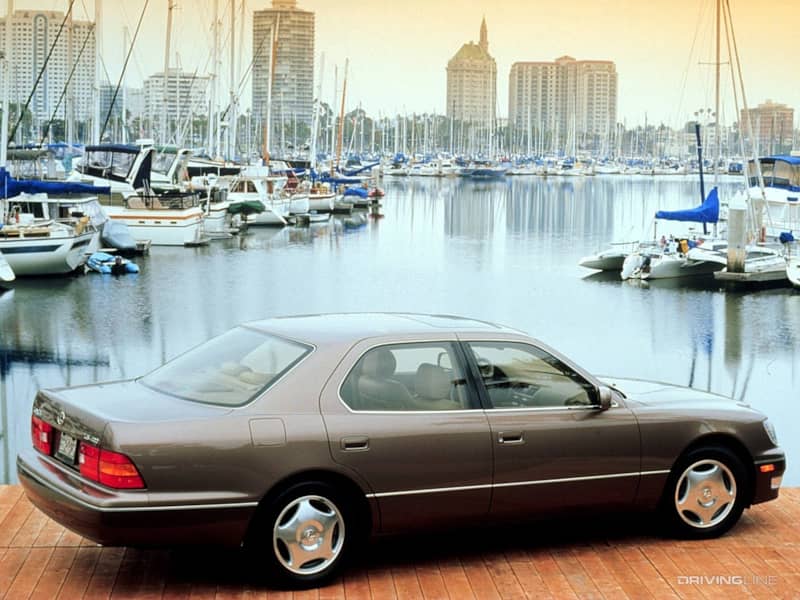
It was more than just hype. Not only was the 1UZ-FE capable of generating effortless, vibration-free acceleration in the full-size LS sedan, but its oversquare bore and stroke and 6-bolt main bearings went a long way towards making it near-bulletproof in terms of reliability. By the end of the '90s, the 32-valve design had been upgraded with variable-valve timing, which pushed output to 300 hp and 310 lb-ft of torque in its highest spec. The V8 stayed in production all the way until 2004 (powering Japanese-market commercial vehicles after it left North America in the year 2000), and served as the basis for several more generations of eight-cylinder engines for Lexus.
Nissan VK45DE
Nissan's Infiniti brand took a lot longer to get to its first V8 engine—more than a full decade, in fact—but it also proved to be the foundation of the company's future eight-cylinder efforts. The VK45DE was also focused on providing quiet, effortless power, and it was initially deployed in the 2002 Infiniti Q45 sedan (followed quickly by the FX45 crossover SUV and the M45 full-size sedan).
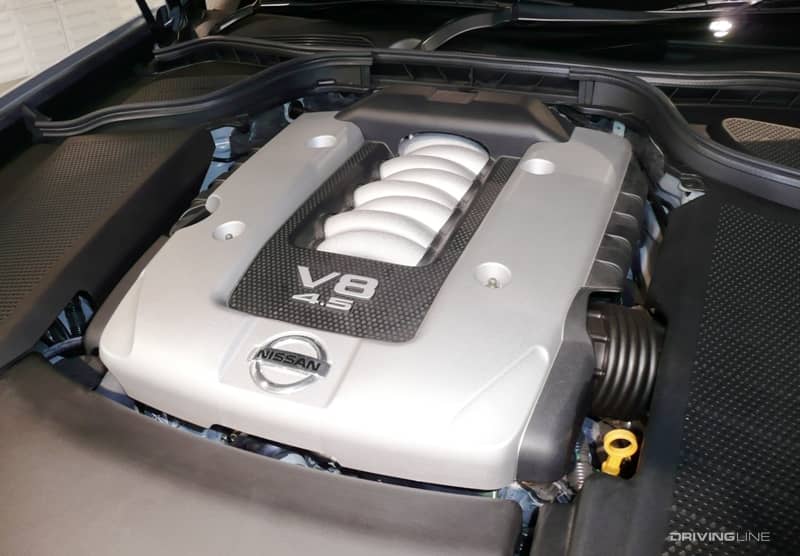
The VK45DE was a 4.5L unit that featured a DOHC, 32-valve design, with a five-bearing crankshaft, coil-on-plug ignition, forged rods, and variable-valve timing. Power from the aluminum block was a hefty 340 ponies and 333 lb-ft of torque, and it wasn't long before the company's NISMO racing division had developed a flat-plane crank versions of the motor to install in the Nissan GT-R.
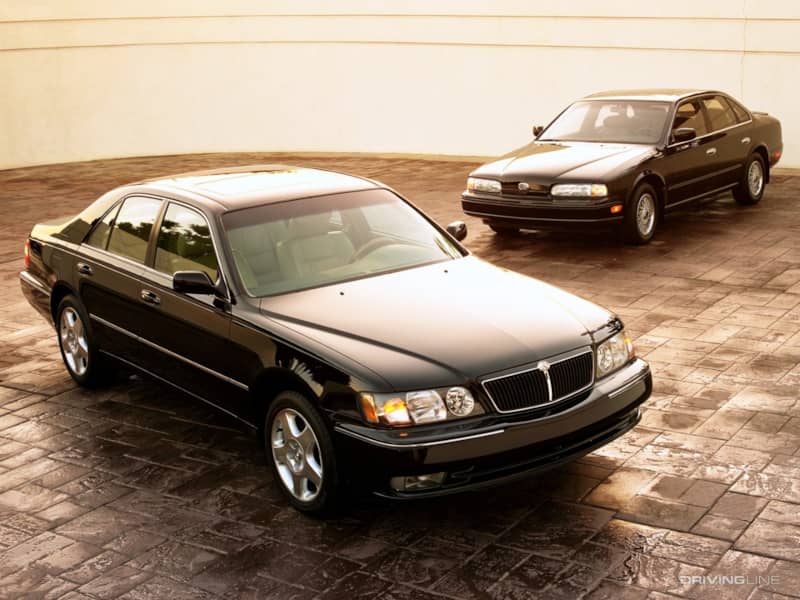
That's right—Nissan was so confident in the capabilities of the VK45DE that it swapped out the venerable VR38DETT twin-turbo V6 from the GT-R and replaced it with a 490 hp version of the V8 for competition in Super GT starting in 2008 (having tested it via a 350Z Super GT program the year before). In fact, the engine went on to serve the power plant for Le Mans Prototype cars in the LMP2 class from 2011 to 2016, where it was good for 450 hp and 430 lb-ft of torque.
Lexus 2UR-GSE
Although also technically manufactured by Toyota, the 2UR-GSE V8 was never offered in anything other than a Lexus. This 5.0L V8 was intended specifically to fill a high performance role at the brand when it began rolling out its 'F' series sports models towards the end of the early 2000s, starting with the 2008 Lexus IS F.

After its successful team-up with Yamaha in designing the V10 engine offered by the LFA supercar, Lexus again turned to its country-mate to produce the 32-valve heads for the 2UR-GSE. The high-compression (11.8:1) V8 also features direct fuel injection, and initially produced 416 hp and 371 lb-ft of torque when offered in the IS F. Nearly a decade later the same engine was installed in both the RC F coupe and the GS F mid-size sedan, where a compression bump added 51 additional horsepower along with a smaller increase in torque. A hybrid version of the V8 was even featured in the 394 hp Lexus LS 600H full-size four-door.
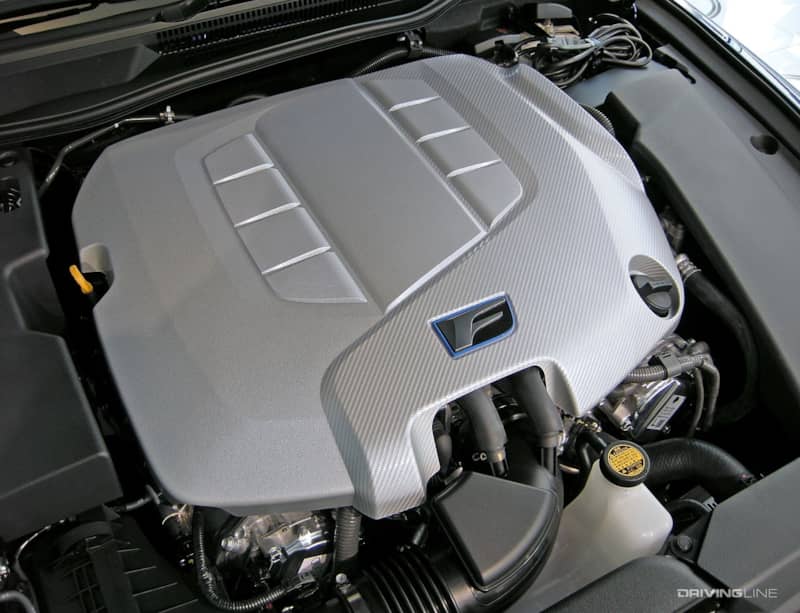
The Lexus 2UR-GSE is the most potent engine ever offered by Lexus, and a recent update is currently living between the front fenders of the Lexus LC 500 coupe and convertible, where it generates 471 horsepower and 398 lb-ft of torque.
Nissan VK56DE
By the time the Nissan Titan pickup program rolled around, the automaker knew that it needed a higher displacement engine to generate the torque required to meet American towing and hauling needs. The 5.6L VK56DE V8 grew from the roots of the VK45DE program, with the company's engineers adding 9.3 mm of stroke and using a 98 mm bore diameter while maintaining its 32-valve DOHC design in a marketplace where American trucks were push-rod only.
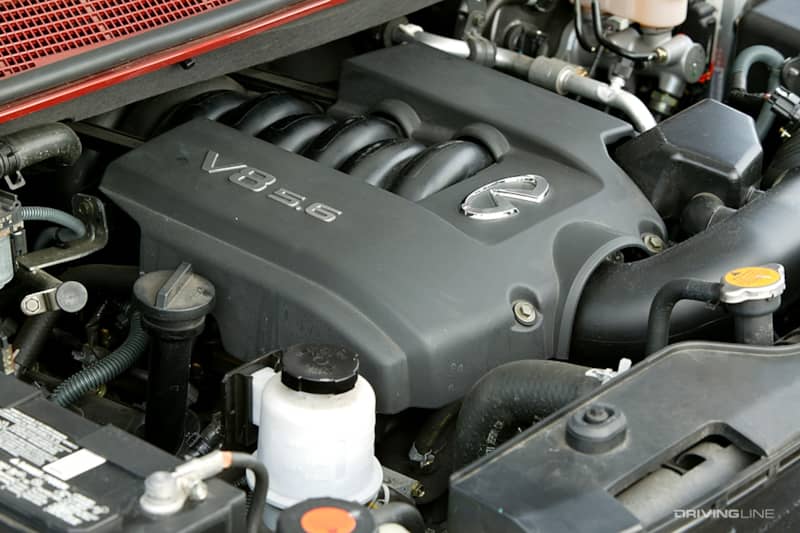
Compression was kept low at 9.8:1 to facilitate the use of regular fuel, and the V8 generated a respectable 305 horsepower and 379 lb-ft of torque when it first appeared in 2004 with the Titan and the Armada SUV (as well as the latter's Infiniti QX56 twin, where premium fuel boosted output to 320 horses and 393 lb-ft of torque). Eventually it would also find its way into the Pathfinder, as well as Nissan's full-size van family.
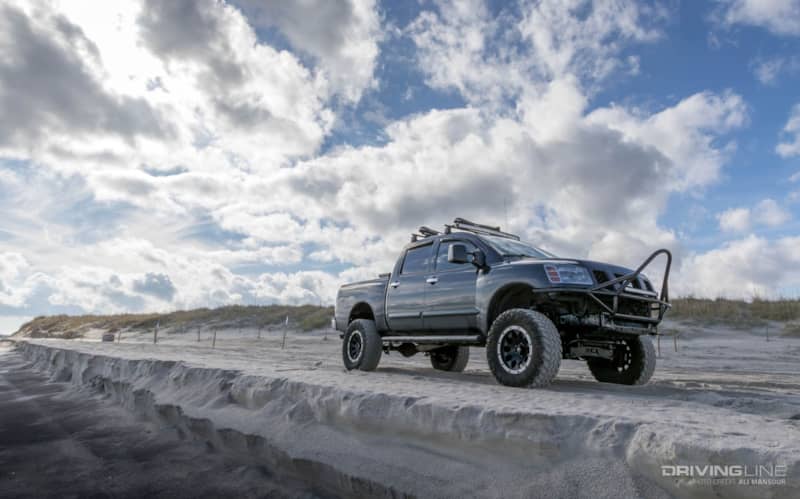
The VK56DE soldiered forward for almost 10 years before it was updated with direct fuel injection, which boosted output to 420 hp for Infiniti models (the QX80 sport-utility vehicle and the M56 sedan), while hovering between 375 hp and 400 hp for Nissan applications. As with the smaller V8 that preceded it, NISMO put together a race-ready versions of the engine for use in GT1 and Australian V8 Supercar competition, and it blasted out an incredible 650 hp.
Toyota 3UR-FE
Toyota also needed a better truck motor when it redesigned the Tundra for the 2007 model year, and it made a dramatic jump from the modest 2UZ-FE that had motivated the previous generation to the 3UR-FE. The new engine was a 5.7L design that borrowed some of its technology from the Lexus 2UR-GSE, but prioritized torque, durability, and affordability over high-revving performance.
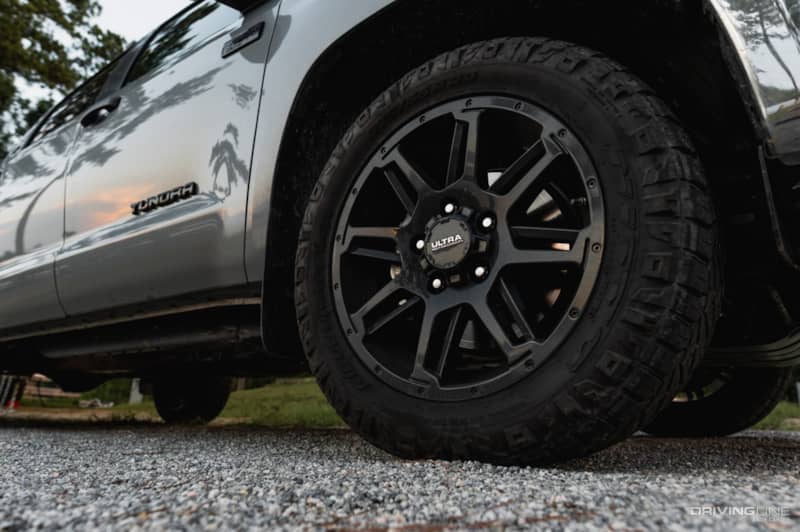
As a result, the 3UR-FE didn't feature direct fuel injection but did come with 32-valve DOHC heads, and it delivered 381 hp and 401 lb-ft of torque at the time of its introduction, which were strong numbers for any V8 engine in that era. The Tundra shared its motor with the Sequoia SUV as well as the Lexus LX 570 luxury sport-utility vehicle and its Toyota Land Cruiser twin.
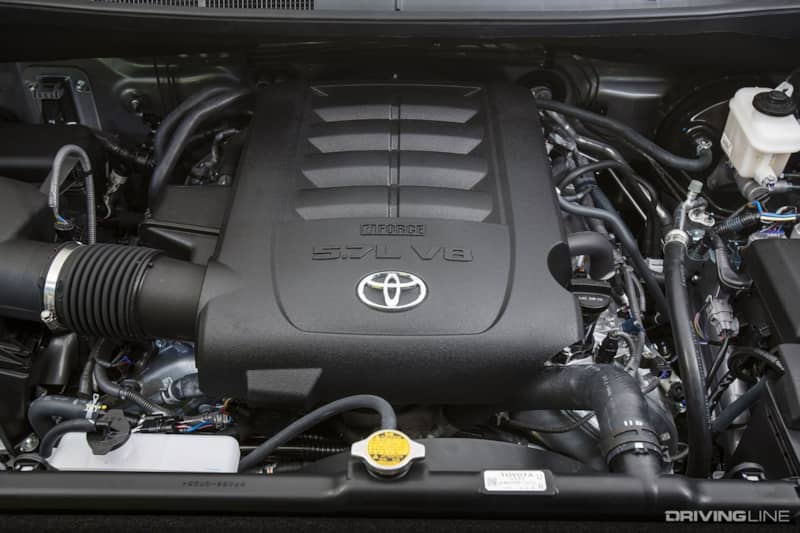
The motor proved to be so successful that it was produced with no real changes or updates for close to 15 years, with only the recent 2022 Toyota Tundra introducing a replacement. In fact, it was such a popular choice that in some markets Toyota removed the V6 option from the Tundra's order sheet, effectively making the 'iForce' V8 standard equipment.




